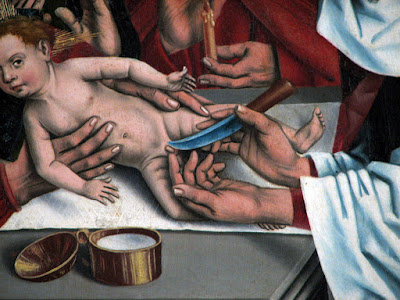The line “It sounds real classy living in a chateau” from the punk rock band The Tubes' 1977 hit song “White Punks on Dope” could apply to me. I live in a 16th century palazzo in Rome. People immediately have visions of opulence and frescoed ceilings. But not this palazzo. I live in Trastevere, the other side of the river, or metaphorically, the other side of the tracks. Traditionally it's been the working class district. The only fine palazzo I can think of over here, apart from a few ecclesiastical buildings, is Palazzo Corsini, originally built near the end of the 15th century by a Cardinal Riario, brother to the Pope at the time and father of the future Pope Julius II (of Michelangelo fame). Later the property was acquired and renovated by Queen Christina of Sweden who converted to Christianity and settled in Rome. In the 18th century it was bought by the Corsini family, and retains their name today. Across the street from Palazzo Corsini is the fabulously luxurious Villa Farnesina built by the incredibly rich Agostino Chigi in the early 16th century, who happened to be Pope Julius II's banker. These properties, though are not technically in Trastevere. They are outside the City walls, just beyond the Porta Septimiana on the road leading to the Vatican. But I digress...
By the early 1600's a clump of 5 buildings on the east side of the piazza had coalesced into the nascent Palazzo built by the Cesarini family, their avatar the eagle (a rather skinny specimen it might be noted, but I guess things weren't as fat back then) still spreads its wings above the main and only entrance. The bestiary continues inside on the piano nobile with a lion's head on the crest of the Leoni family who acquired the palazzo in the 18th century. In 1778 this main floor (piano nobile) was occupied by the newly established “Venerabile Conservatorio di S Giuseppe”, a “Conservatorio delle Pericolanti” or conservatory for those in danger, meaning young girls. 42 of them under the age of 18 were housed here, and you can guess the dangers. Rome was a very rough town. The 19th century saw the palazzo pass to the Pizzirani family who added the top floor to the building, and still own the building today.
The neighborhood has suffered significantly over the past years from gentrification. One by one (with a few exceptions) stores for local needs have become more upscale stores for the tourist trade. The palazzo has resisted this trend, retaining its grittiness, but change is infiltrating here too. As long time residents have died or moved away, the vacant apartments are restructured and modernized, the old cotta tiles laid in red and black patterns are replaced with fake wood laminate floors, and rented out as Airbnb. In 2015 the exterior was cleaned of a century+ of grime and repainted. A team of restorers descended one day on the stairwell wearing hazmat suits and pre-covid n95 masks and with surgical precision removed discreet layers of paint to reveal the colors of centuries past. Beneath the current beige and brown is a forgotten palette of creams, pale blue and even some reddish-orange. Still, the place retains its forgotten Old Rome feel.
It is that forgotten authenticity that appeals to me. It is the past, not a sanitized version of the past. Up and down the well worn grand staircase to the piano nobile has, I realize, inspired me on a subconscious level. The erosion of the stonework, the repairs, the suturing of materials to replace what was lost has crept into my work as a visual doppelganger of my daily ascent and descent. My experience has been made manifest.
Not content with with subconscious interactions, I occasionally engage in physical interactions with the space. I admit, I have treated the space as my playground, wondering my “if” out loud, not particularly caring if the neighbors are listening. Its just a little more grime added to the centuries.
post script: after a weekend of installing and photographing my drawings in and around the public spaces I heard a very loud voice in the stairwell speaking to the caretaker. I assumed the speaker was Pizzirani himself, heir to the palazzo. My drawings were gone. Outside the palazzo was a notice of an upcoming meeting of The Committee for Life in Trastevere aggressively taped to the door. Item number 4 on the agenda to be discussed was “street artists”. Not sure if that was a good sign or not...





















































